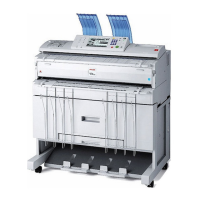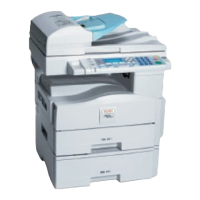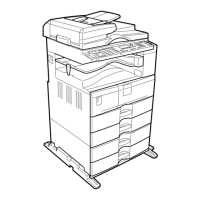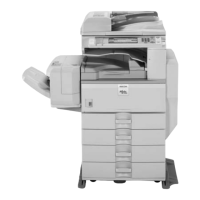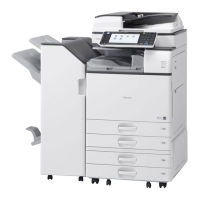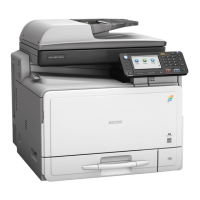• If you select “Erase All Memory”, the following are also deleted: user codes, counters under each
user code, user stamps, data stored in the Address Book, printer fonts downloaded by users,
applications using Embedded Software Architecture, SSL server certificates, and the machine's
network settings.
• If the main power switch is turned to [Off] before Auto Erase Memory is completed, overwriting will
be stopped and data will be left on the hard disk.
• Do not stop the overwrite mid-process. Doing so will damage the hard disk.
• Before erasing the hard disk, you can back up user codes, counters for each user code, and Address
Book data using SmartDeviceMonitor for Admin. For details, see SmartDeviceMonitor for Admin
Help.
• While the Erase All Memory function is in progress, you cannot use the machine-except to pause the
“Erase All Memory” function momentarily. If you select Random Numbers as the overwrite method
and specify three overwrites, the machine will need about two and a half hours to erase its entire
memory.
Using Erase All Memory
This can be specified by the machine administrator.
For details about logging on and logging off with administrator authentication, see “Logging on Using
Administrator Authentication”, “Logging off Using Administrator Authentication”.
• Should the main power of the machine be turned off before Erase All Memory is completed, data will
remain on the hard disk. Make sure the main power is not turned off during overwriting.
1. Disconnect communication cables connected to the machine.
2. Press the [User Tools/Counter] key.
3. Press [System Settings].
4. Press [Administrator Tools].
5. Press [ Next] repeatedly until [Erase All Memory] appears.
Deleting Data on the Hard Disk
167

